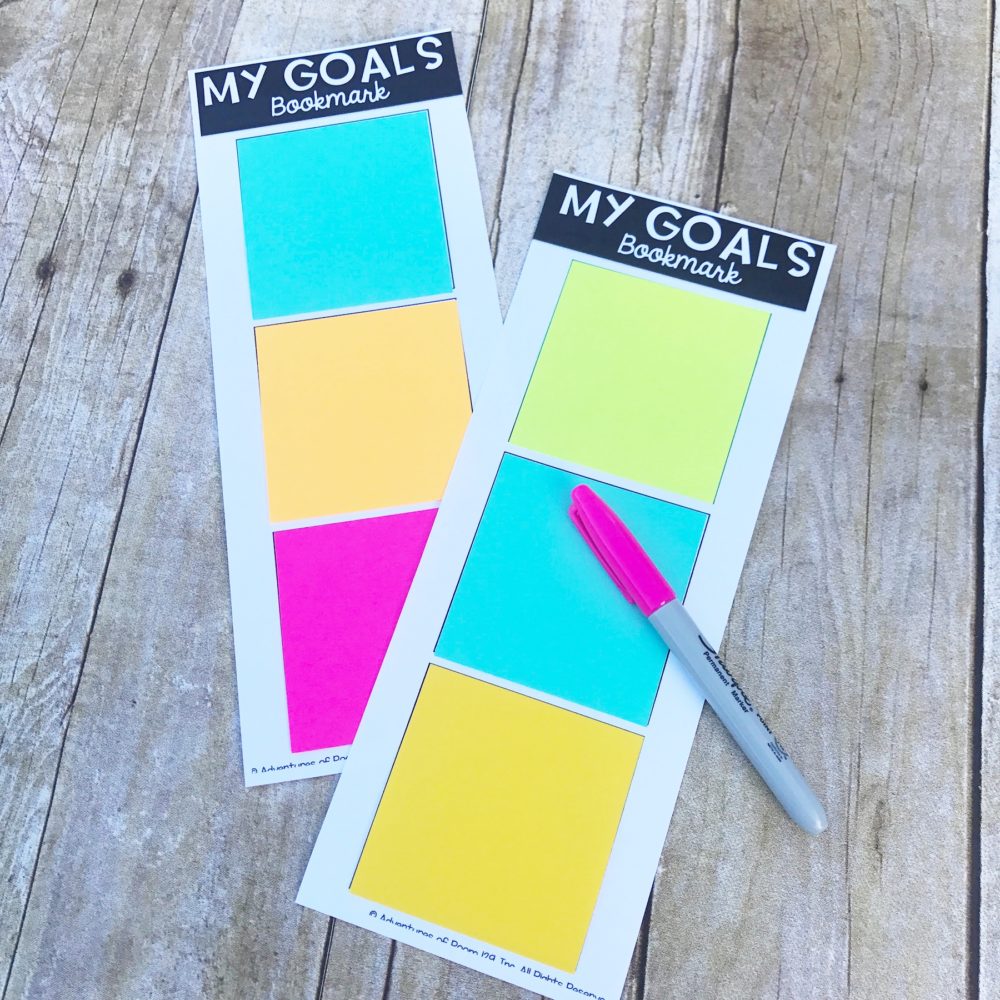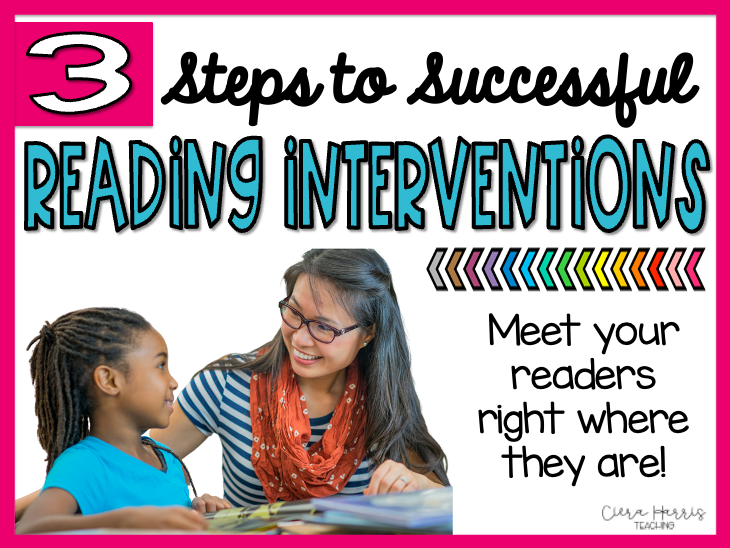As much as we hate it, test scores continue to drive conversation, funding, and direction when it comes to schools. But even with standardized testing out of the picture, there still needs to be an accurate way to assess students in their reading abilities. So testing isn’t going anywhere anytime soon. So what can teachers do to help their students? What are the best ways to increase reading test scores? I’ve gathered my top 10 tips to help!

Want to watch the video instead? Check it out below! Make sure to subscribe to get updates on all new content!
Increase Reading Test Scores Tip #1: Use data consistently
The lesson plans we create and use in our classroom should always be designed using data. Planning 2-3 weeks ahead doesn’t work. Using data from exit tickets, small groups, qualitative data from observations and conversations, etc. should be used to drive instruction. When you look at the data, you’re looking not just to see who ‘has it’ and who doesn’t. You’re also looking to see what misconceptions the students have about the objectives. When you can identify their misconceptions, you’re better able to tweak current lesson plans and plan better ones that will help fill gaps in students’ understanding. A lesson plan without data is simply a compass without a magnet – you have the tool but it won’t work. It won’t get you to your destination.
Tip #2: Match the right interventions to the right students
So many times we put blanket statements on our students’ deficiencies. For example, we’ll say that a student struggles with making inferences or identifying text structure. So when we go to plan out interventions, we just look for more activities to cover that skill or concept. But unfortunately, that doesn’t work. It’s clear that the students, through your previous endeavors, haven’t been able to catch on to that skills so doing more and more of the same motions won’t help. We need to break down the skill and see where their misconceptions lie. With making inferences it could be that they are struggling to find the right piece of text evidence or they are not accessing their schema. They could have most of the steps down and correct, but there’s one piece they are missing. The interventions we select should support those specific misconceptions.
This is one of the reasons why I created my 10-minute reading interventions! I wanted quick and ready interventions that scaled in difficulty and addressed many different misconceptions so when I was faced with a student who had a specific misconception, I could pull an intervention that was perfect for them. Make sure to head over and check them out as they are a lifesaver!
Increase Reading Test Scores Tip #3: Use metacognitive strategies
One thing we know for sure when it comes to assessments is there’s no telling what is going to be inside that text. The writers and authors of the assessments come up with some crazy stories and topics for our students to read when being assessed. This alone can cause a lot of issues. If our focus is to support and teach students to use metacognitive strategies such as visualization, making connections, synthesizing, and asking questions, then we are giving them specific tools that they can use and apply to any text. These strategies ensure that the text will become student-centered instead of text-centered. The students will be actively thinking about the text and their own thinking which will ensure that deeper comprehension is taking place!
Tip #4: Break down skills
This was something that I learned the hard way. When addressing a skill or objective in reading, we can’t jump right in. We are throwing our students into the deep end of a topic without giving them any support to walking them into the water. I have come up with a step-by-step formula that helps to break down any comprehension skill or strategy and allows the students to learn the objective, not at a slower pace, but at a pace that will set them up for success when they go to be independent. This formula helps the students learn and understand the skill completely without a text, with a small text, and then eventually a larger text. If you want to know more about this formula, make sure to head over and check it out!
Increase Reading Test Scores Tip #5: Write growth goals
Students need to be invested in their own learning path. It shouldn’t just be up to the teachers to know the students’ strengths and weaknesses and use that information to guide our instruction.  It should also be the students understanding this information and using it to guide their own learning. So what does that look like? Setting growth goals, of course! By having frequent conferences with students and meaningful conversations about what the student is doing well at and areas in which he/she can improve, together with the teacher and the student can set up a growth goal. This goal can be very specific as in percentages and/or levels of grades or it can be broader as in identifying specific objectives or reading skills that the student needs to work on. When doing this, it’s always best to take time to write out action steps that the student can take each day/week to help meet this goal. This will bring the goal to life and put the responsibility on the student.
It should also be the students understanding this information and using it to guide their own learning. So what does that look like? Setting growth goals, of course! By having frequent conferences with students and meaningful conversations about what the student is doing well at and areas in which he/she can improve, together with the teacher and the student can set up a growth goal. This goal can be very specific as in percentages and/or levels of grades or it can be broader as in identifying specific objectives or reading skills that the student needs to work on. When doing this, it’s always best to take time to write out action steps that the student can take each day/week to help meet this goal. This will bring the goal to life and put the responsibility on the student.
Tip #6: Consistent conferences with students
Since I already mentioned it above, might as well focus on this tip next! Yes, if we want our students’ scores to increase then we need to be meeting with them consistently! Why? Because this is where we will get our true data. Data from paper/pencil assessments just gives us quantitive data, data that can be measured by a pencil. But what truly matters is the deep comprehension that’s harder to measure on an assessment. Instead, it’s measured through conversations. Having specific and meaningful literacy-focused conversations with our students can be the key to them showing us exactly what they need to improve. This can be identifying weaknesses but it can also be helping them find the book that will turn them into the avid reader you always hoped they’d become. There is only so much data you’ll get from the weekly tests you give. If you want more, talk!
Increase Reading Test Scores Tip #7: Increase reading volume
Research shows us that the volume at which students read is directly correlated with the level at which they read. Therefore the students who read more and more are the students who are going to grow more and more. So inevitably if we want our students’ reading scores to increase then we need to increase the volume in which they are reading. What does this look like in the classroom? It means we are putting an emphasis on independent reading time! If our schedule changes or math goes longer, independent reading time doesn’t get swept under the rug. It’s one of the, if not THE most important time in our classroom. This also means that teachers are sending books home with students and motivating students to read at home through challenges and incentives. Teachers are book matching relentlessly helping students find the best books for themselves. Teachers are read aloud to students every day, creating a literacy-rich environment.
Tip #8: Model more
 Every time I mention this, whether it’s in an email or in a video, I always get teachers saying back to me, “I need to do more of this.” Modeling for our students should be an everyday occurrence. No. I take that back. It should be an every LESSON occurrence. Never in a given lesson should there not be a time towards the beginning of the lesson where the teacher doesn’t model the thinking and the activity for the students. Without modeling, students are simply guessing as to what the process looks, feels, and sounds like to complete a task. When we model for students, especially in reading, we get the chance to SHOW them what is going on inside of our brains. We get to ask questions to ourselves because it’s a part of the thinking process. Teachers get to make mistakes and correct them. We get to show them what it’s like to be a reader and a thinker! Modeling is one of the most valuable keys teachers have in their hands!
Every time I mention this, whether it’s in an email or in a video, I always get teachers saying back to me, “I need to do more of this.” Modeling for our students should be an everyday occurrence. No. I take that back. It should be an every LESSON occurrence. Never in a given lesson should there not be a time towards the beginning of the lesson where the teacher doesn’t model the thinking and the activity for the students. Without modeling, students are simply guessing as to what the process looks, feels, and sounds like to complete a task. When we model for students, especially in reading, we get the chance to SHOW them what is going on inside of our brains. We get to ask questions to ourselves because it’s a part of the thinking process. Teachers get to make mistakes and correct them. We get to show them what it’s like to be a reader and a thinker! Modeling is one of the most valuable keys teachers have in their hands!
Increase Reading Test Scores Tip #9: Build their schema
YES!! This tip probably should have been #1, but oh well. Here we are! Building the students’ schemas is very important in helping to increase their test scores. Schema is the one tool that every single student has to bring with them to a text. And a lack of schema, regardless of how strong their other comprehension skills are, can drastically bring down a students’ understanding of a text. By putting schema first, teachers are helping to acknowledge schema gaps, give students new experiences, and focus on what to do when a lack of schema is present. If you’d love to know more about using schema in your classroom, definitely check out my schema article!
Tip #10: Teach them how to take a test
Yes, I said it. But hear me out! Assessments are a unique beast. And many times, we put them down in front of students and expect them to understand how to sort through all of the information and do their best. My own children right now are in 2nd grade and have never take a test (other than standardized computerized tests) in their lives. We cannot assume the skill sets are there. So taking the time to talk about proper test-taking strategies and protocols is important! It’s not that we’re ‘teaching to the test’ or anything like that. We’re simply acknowledging that testing is one of the venues in which we receive data and we are setting our students up for success by guiding them through the ins and outs of proper test-taking!
There are lots of ways to increase reading test scores, but none of them hold a candle to good old-fashioned hard-hitting teaching. Do what you do best. Love those students and teach your heart out! If you’d like to save this post for later, just pin the image below!







